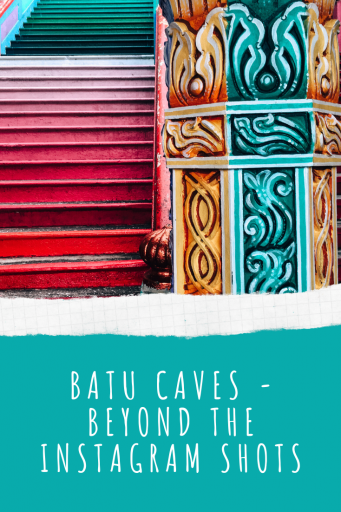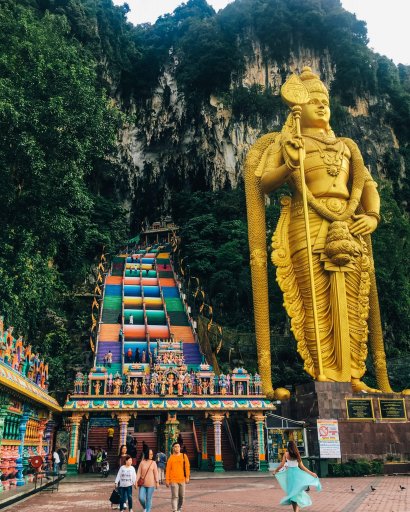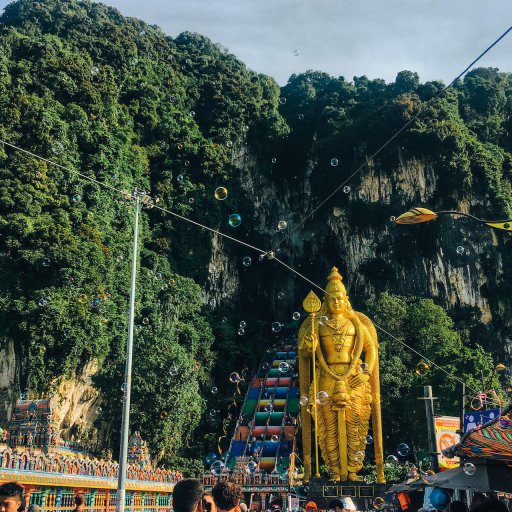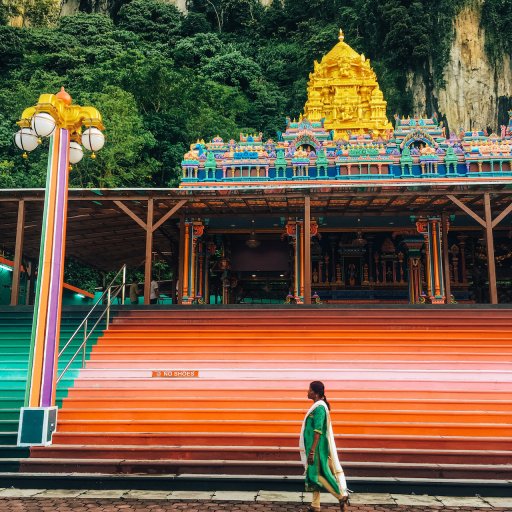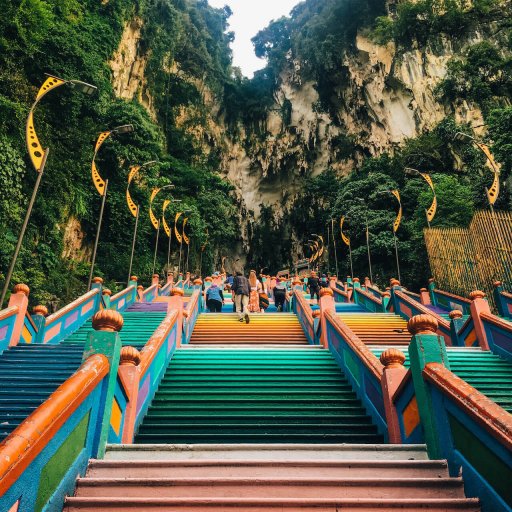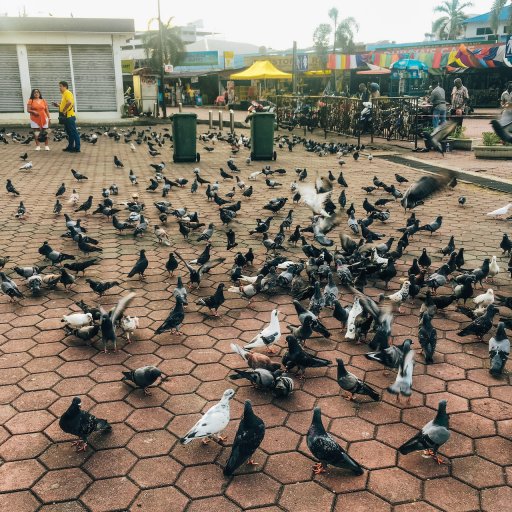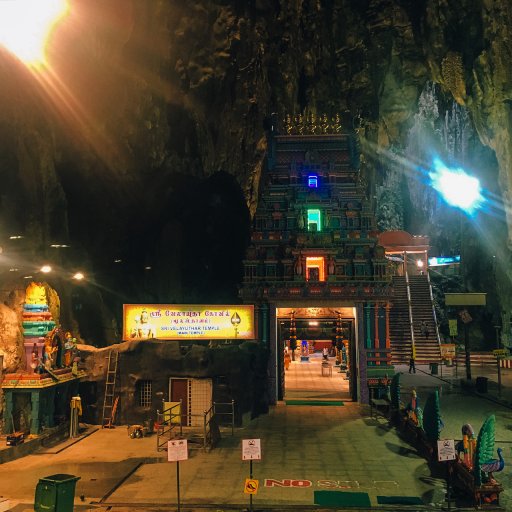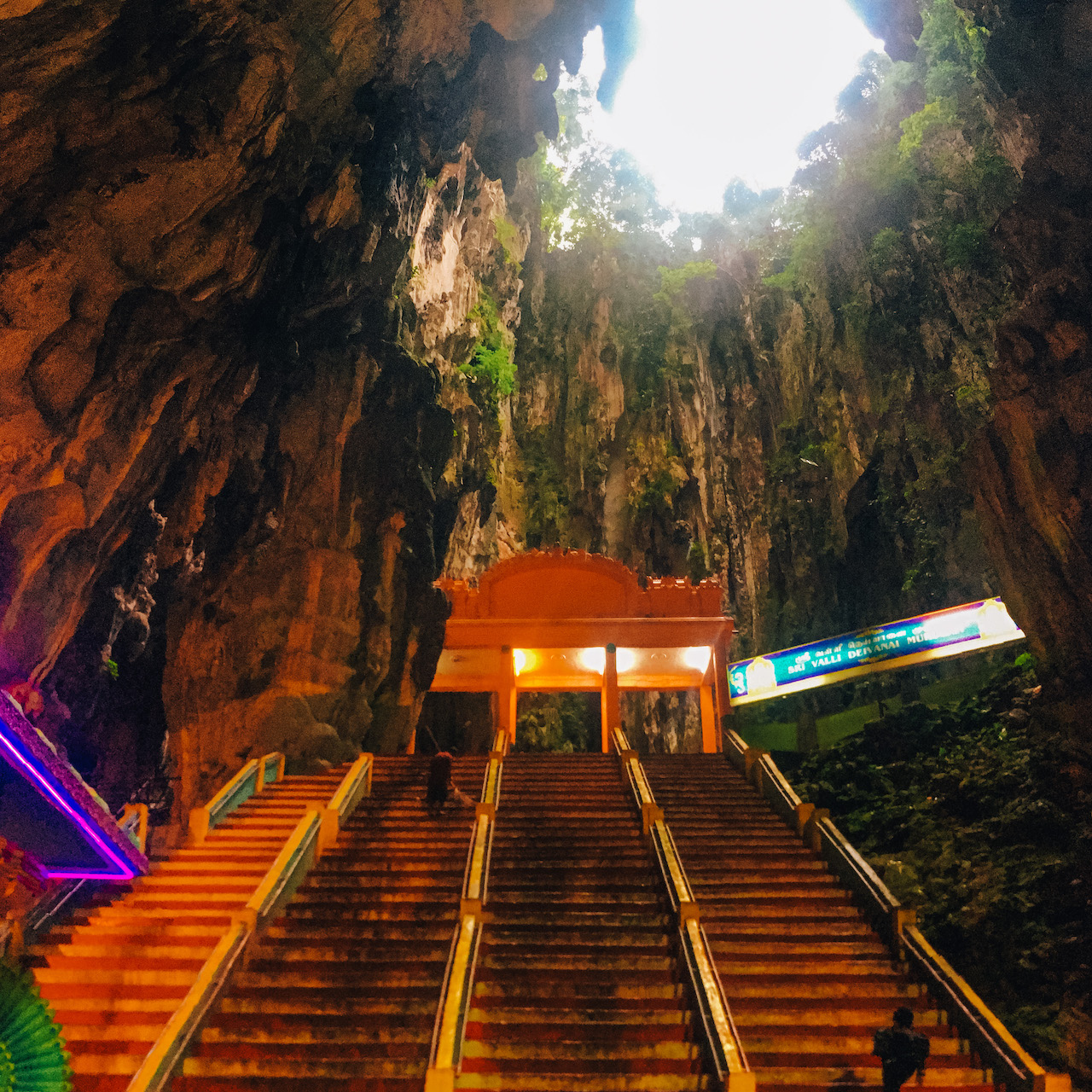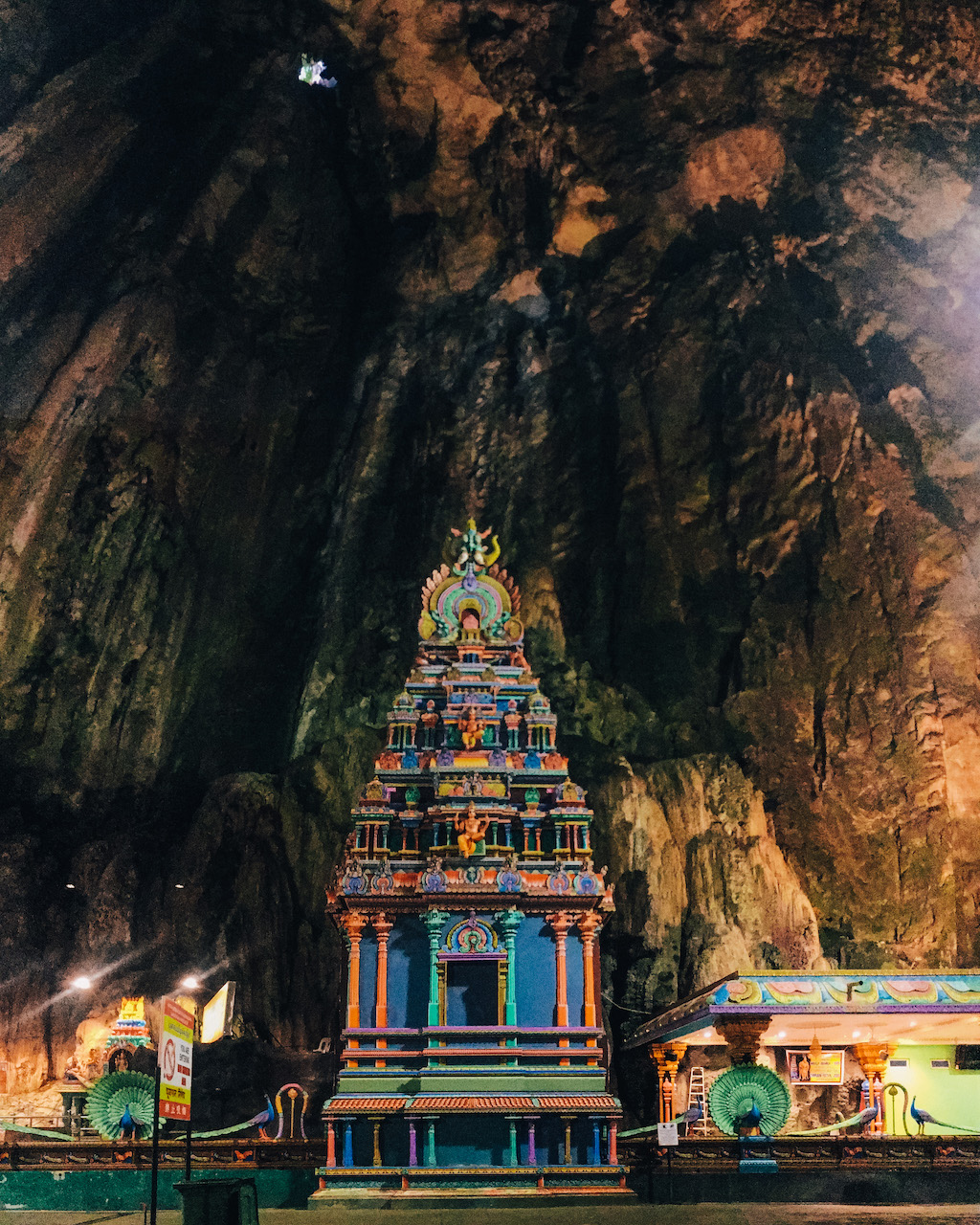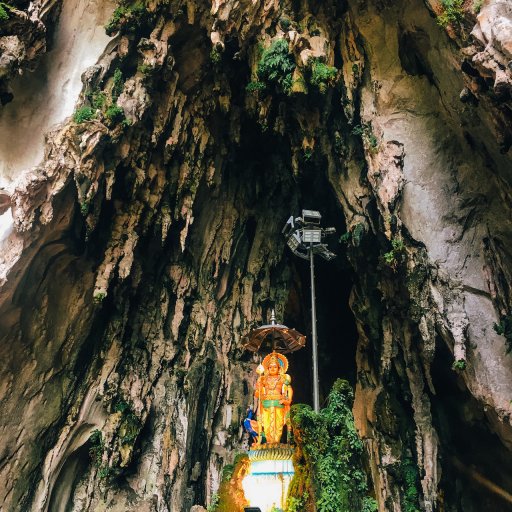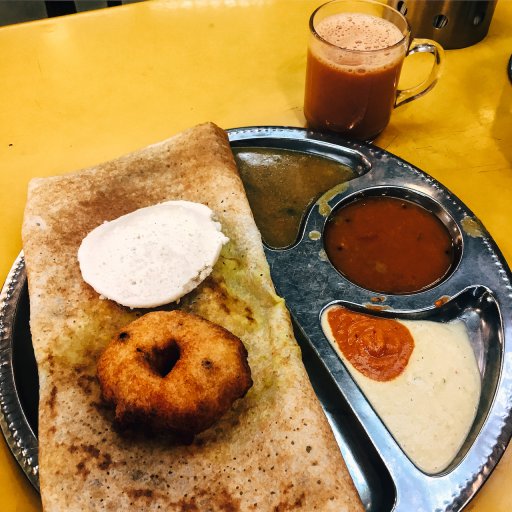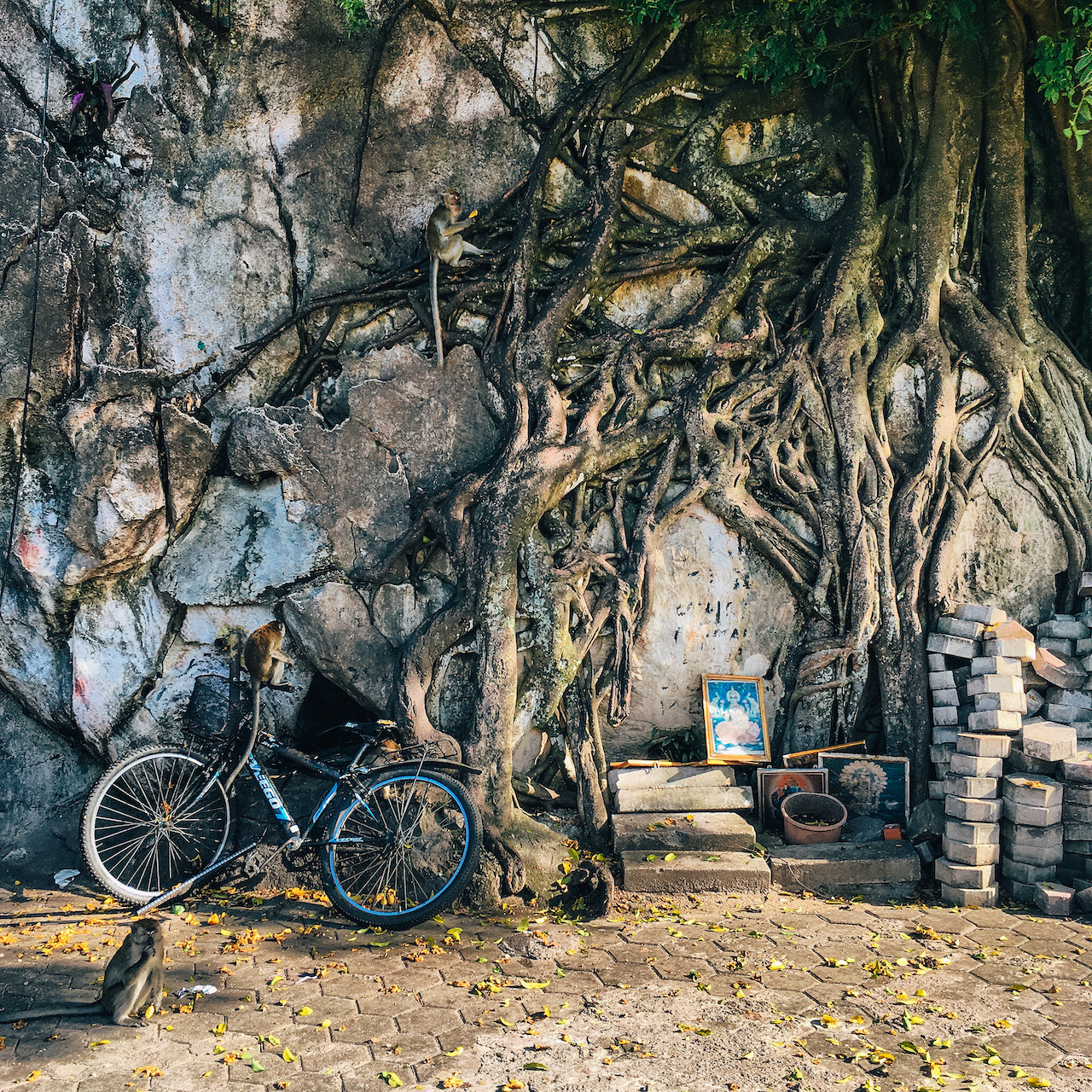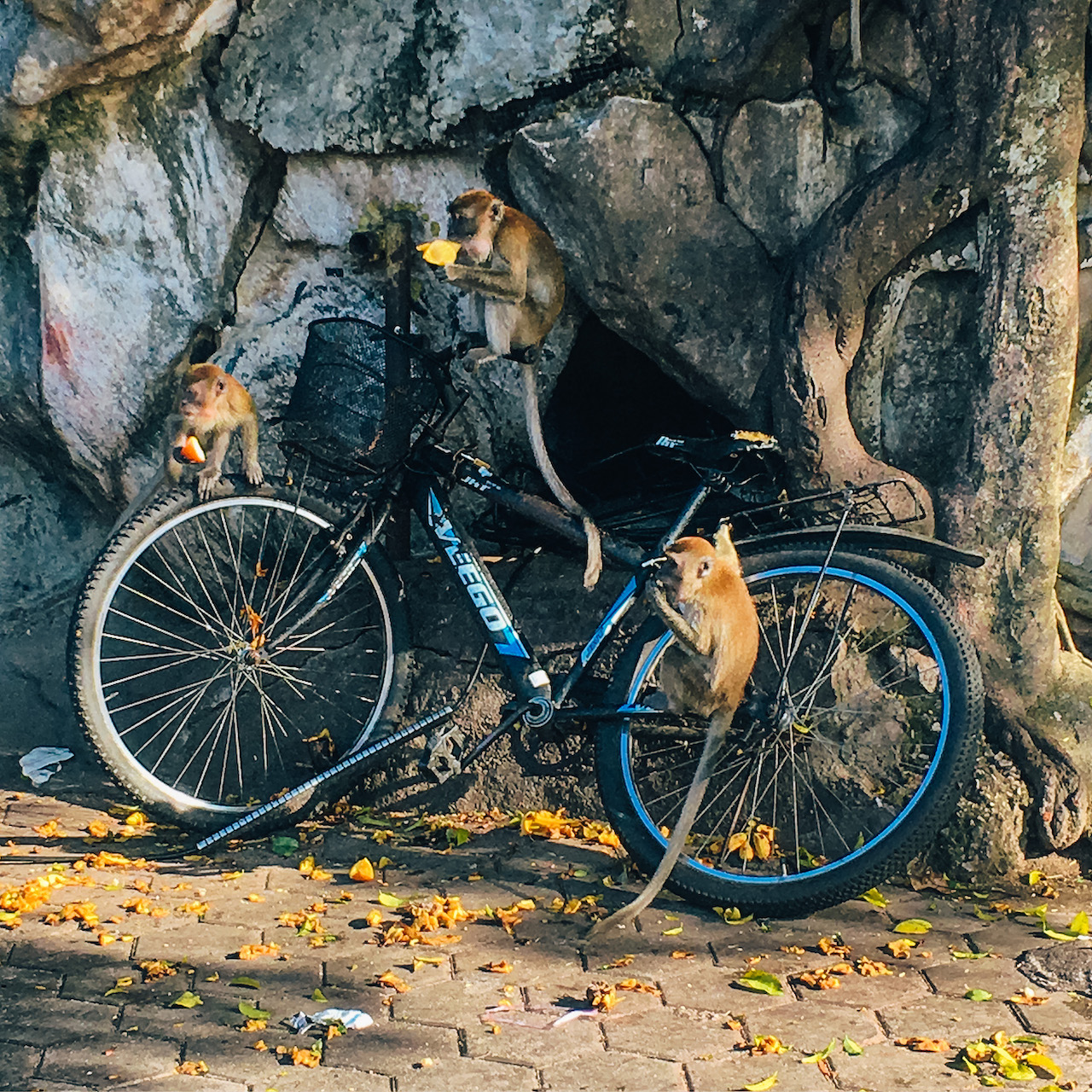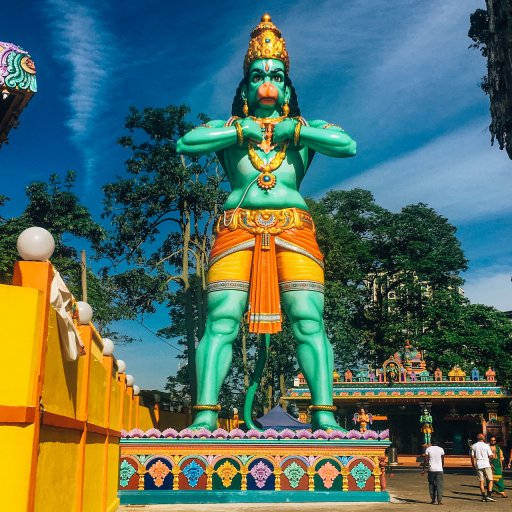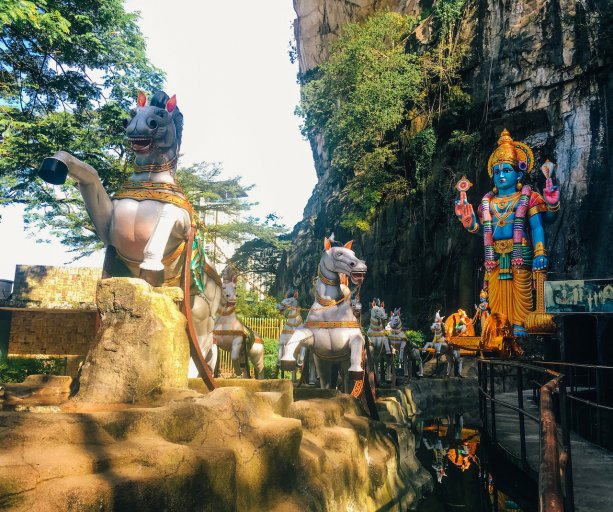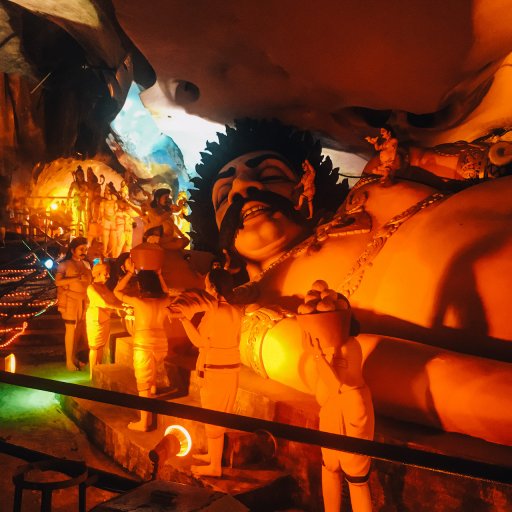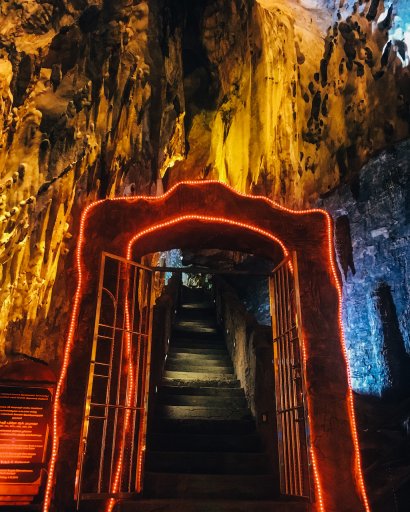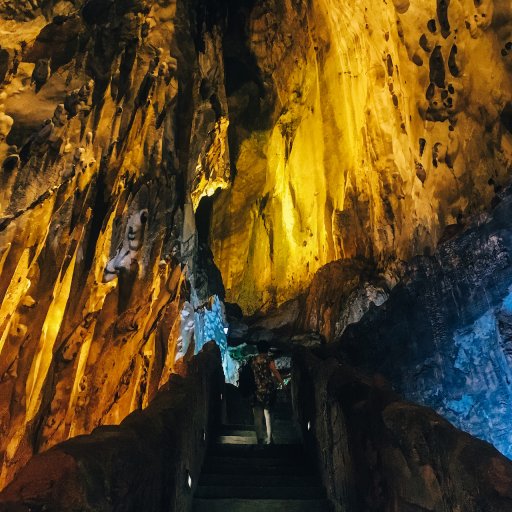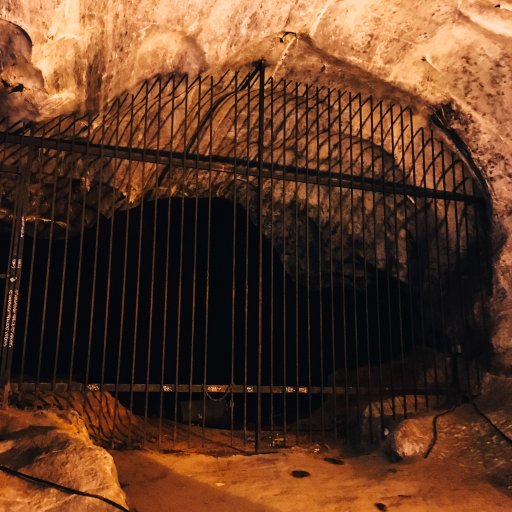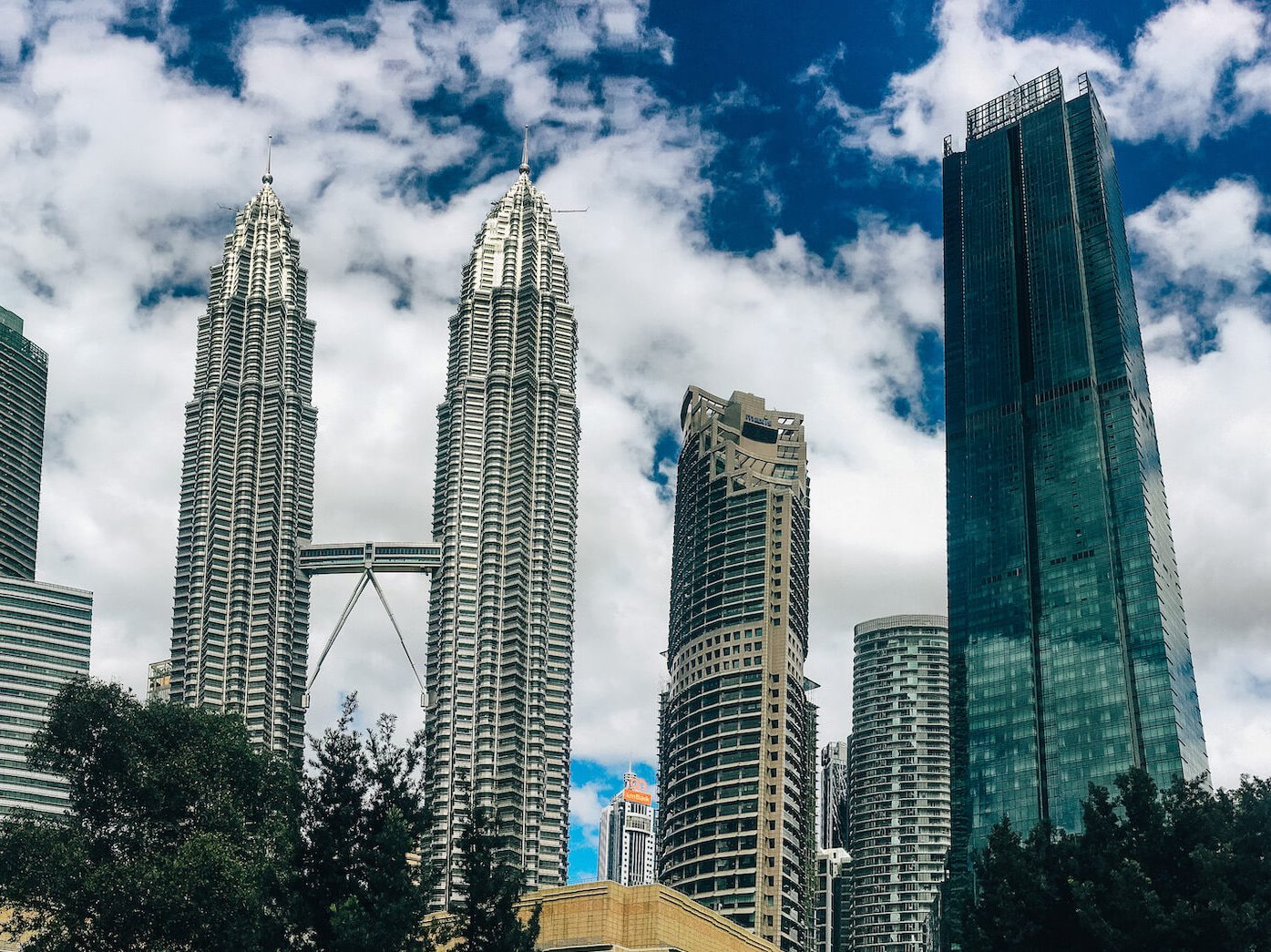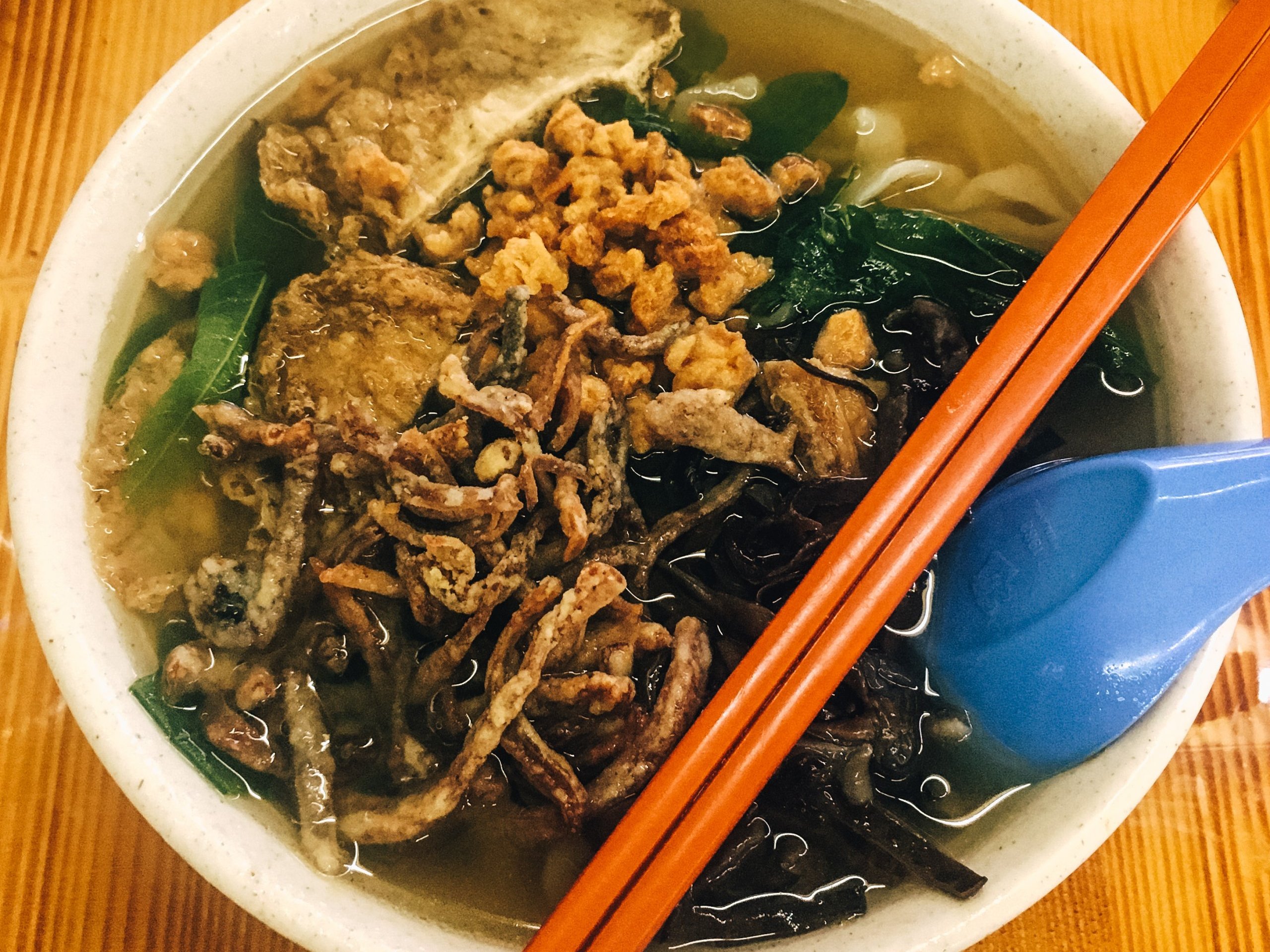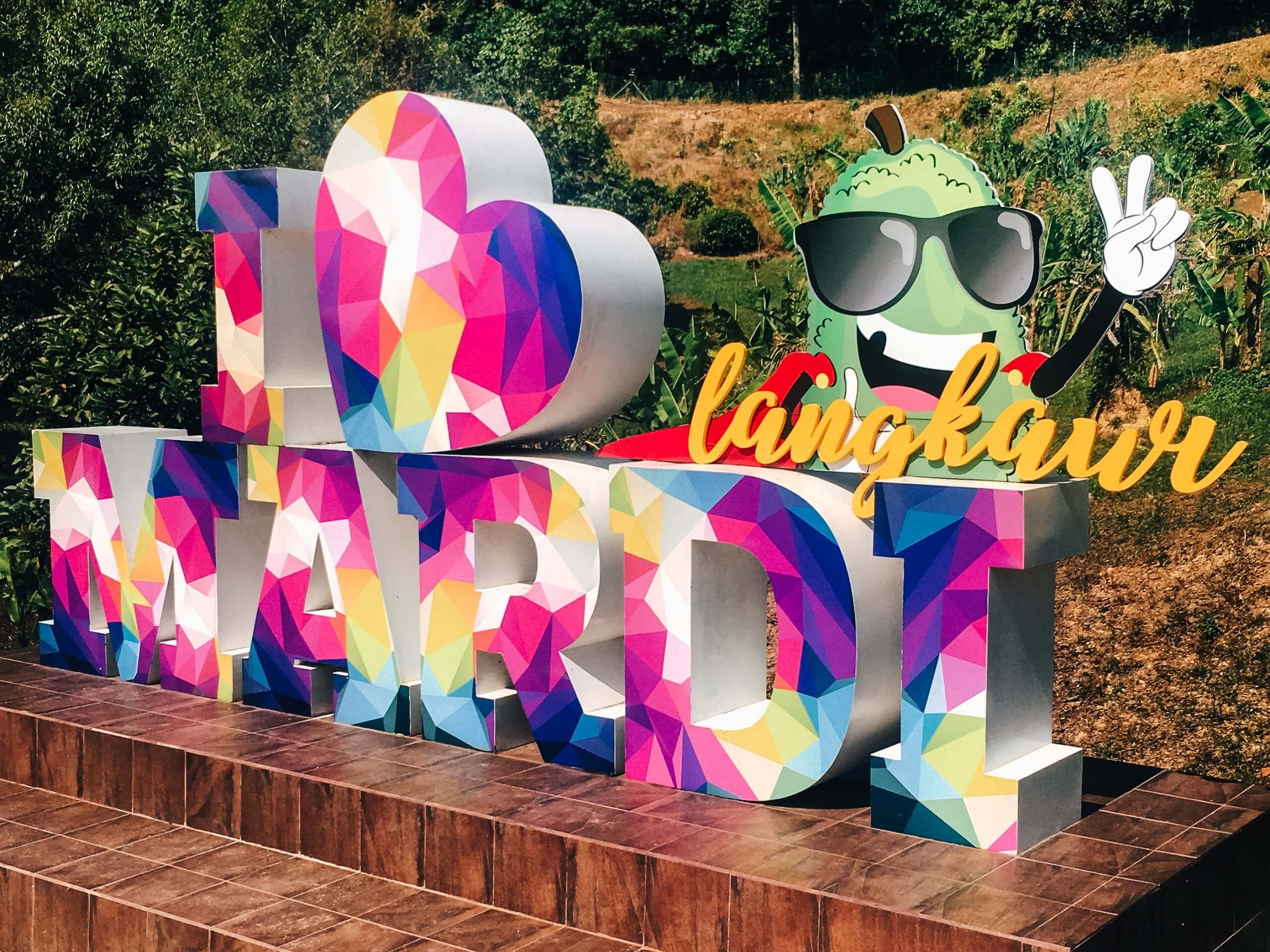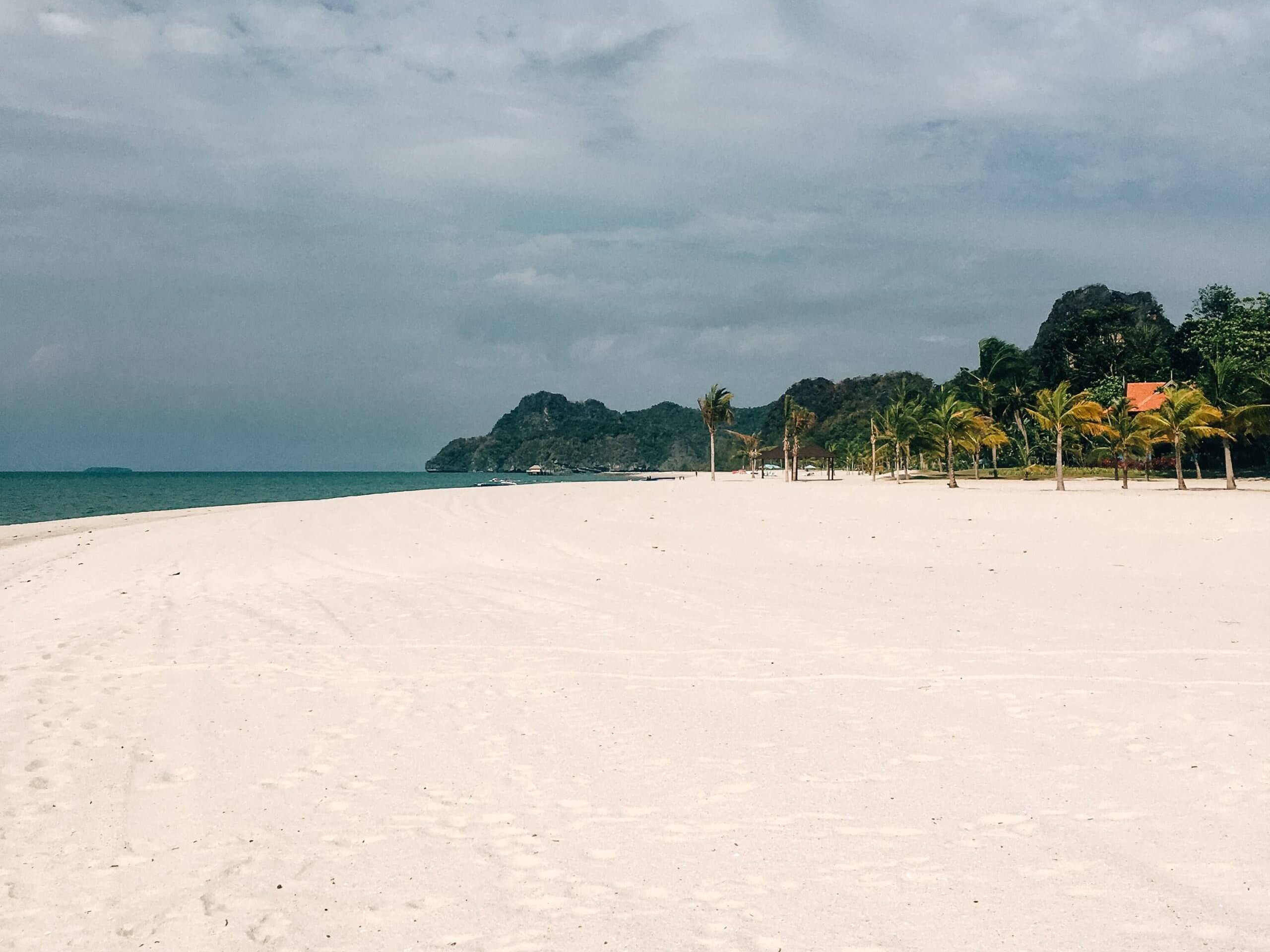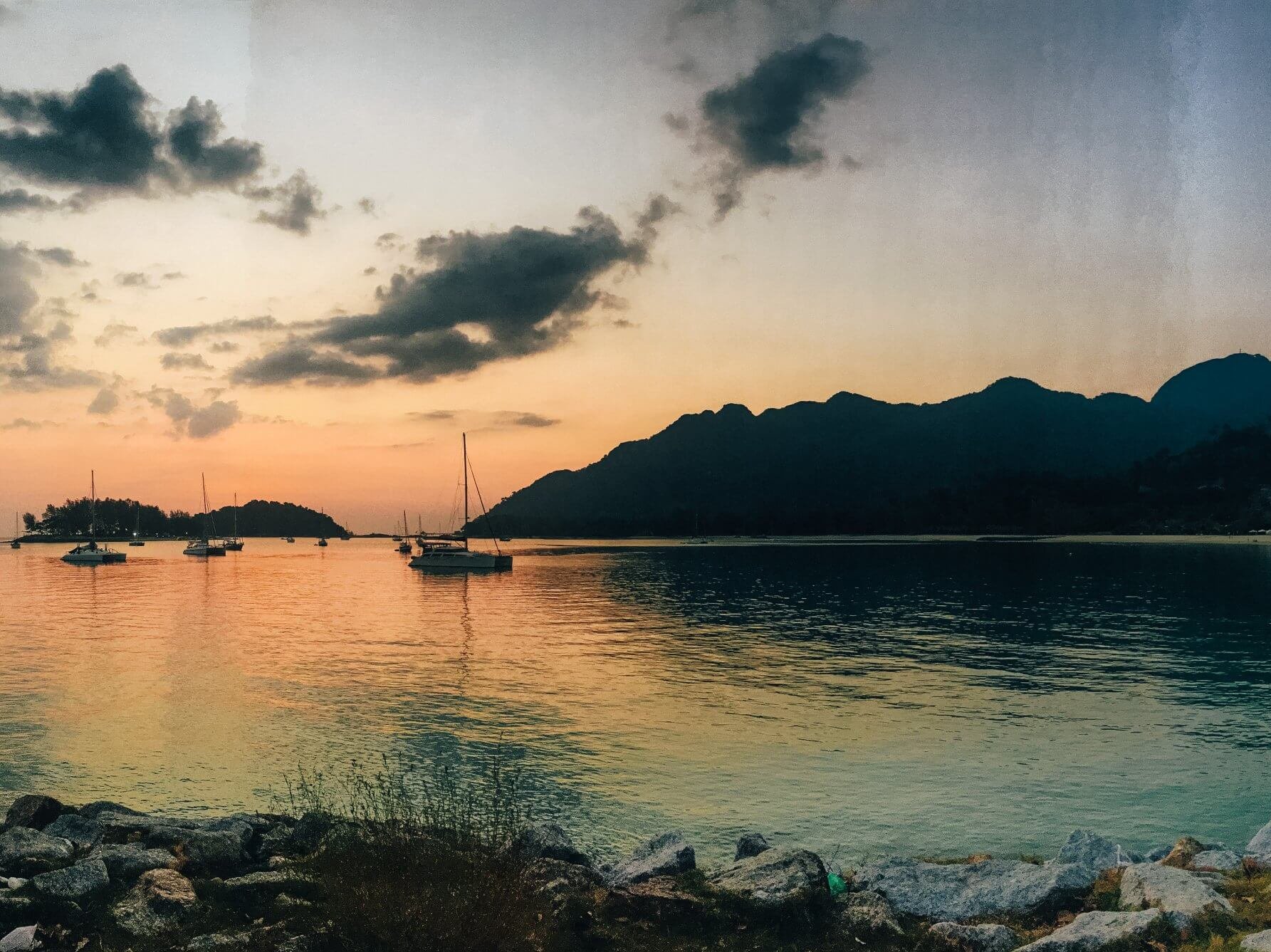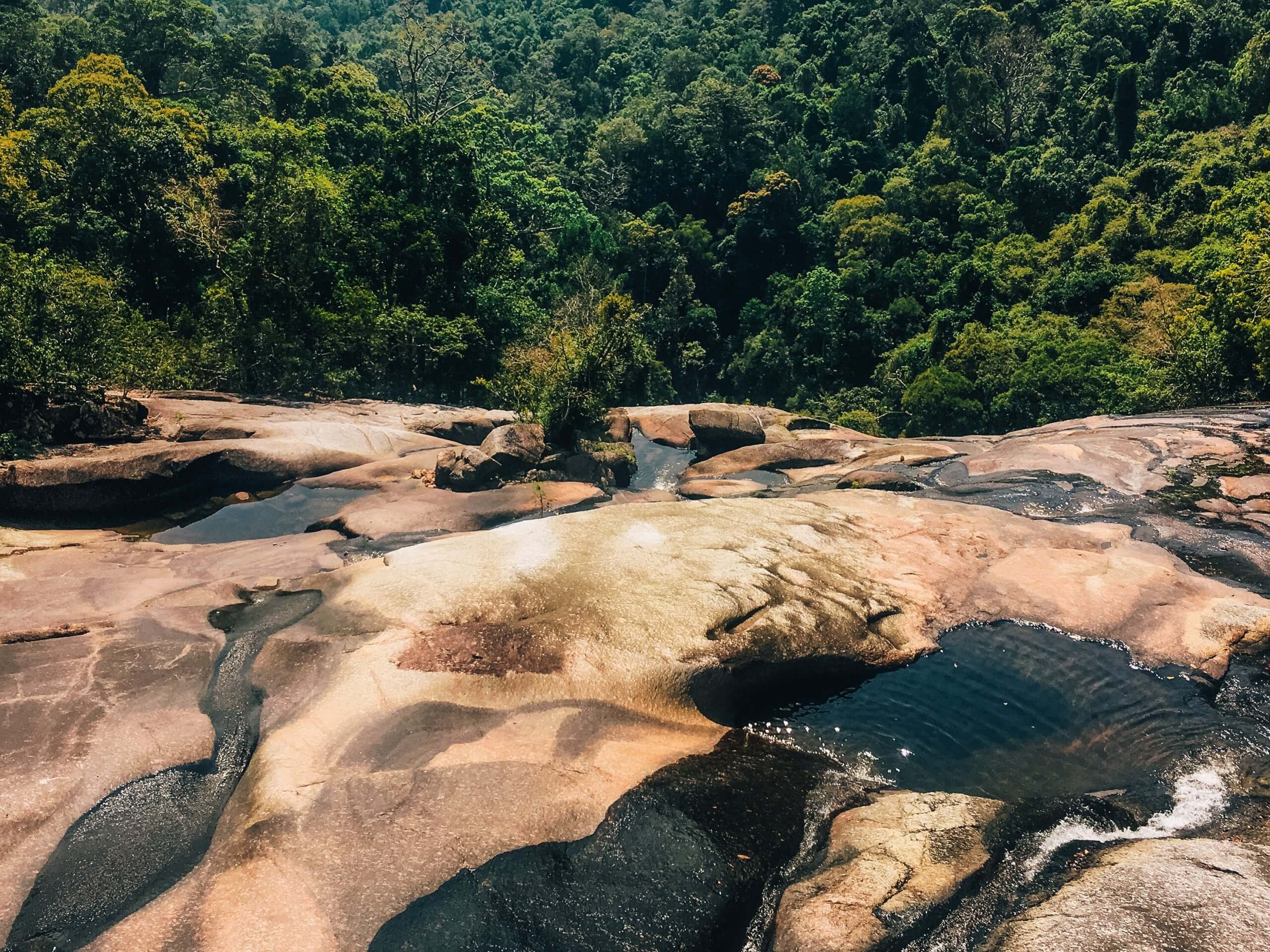If you follow any travel feeds on Instagram, then you have likely stumbled across photos of Kuala Lumpur’s Batu Caves, the steps of which were recently painted in every color of paint available at the paint shop. The rainbow stairway leading up to the main cave, an elongated crevice at the top of a cliff, is a beautifully photogenic setting that has been drawing influencers from all over the globe like kids to an ice cream truck. Naturally I wanted to go see this colorful masterpiece for myself.
Batu Caves are a series of caves and Hindu cave temples, set in a limestone hillside. Historically the caves were used as shelter by the indigenous people of the region. They became famous only after being described and recorded by British colonial authorities and an American naturalist in 1878. An Indian trader shortly thereafter decided to dedicate the spear-shaped entrance to the Hindu God of War.
There was some discrepancy online as to whether the caves opened at 6 or 7 am, so I awoke at 5:40 just to be safe, wanting to beat the crowds. Kuala Lumpur is no Land of the Rising Sun though. The sky was still dark when I awoke. I waited, and waited, and the sun still didn’t give any indication that it would be gracing the world with its presence anytime soon. I finally had the intelligent idea to actually look up what time the sun was scheduled to start the day, and discovered that it does not rise until 7:15 am in Kuala Lumpur in January. With an hour-long train journey to the caves ahead of me, I gave up waiting.
I managed to arrive at 8, which was sufficiently early enough to beat the majority of the crowds. A short walk past the train station and there were the steps, bright and cheerful like a paint-deck fanned up the mountainside, while a 140-foot tall, golden Murugan (the God of war) guarded their entrance.
The scene was deserving of a few moments to quietly stop and admire. Nature, religion, and art had been swirled together into this colorful structure cascading up the hillside. Some people who travel prefer to experience culture. Some prefer nature. This was a place where both could be admired.
I had no idea what lie in wait inside the caves, and so began the hike up the 272 steps. I made quick work of the steps, even though my muscles groaned that they had become lazy over my months in the US. I refused to listen to them.
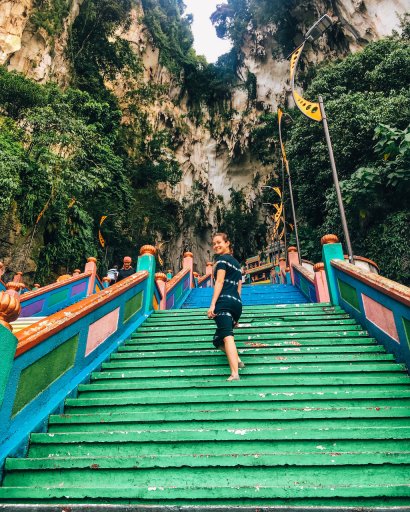
You never really see photos of the insides of the caves, and I guess for good reason. With old metal handrails everywhere, and giant spotlights creating fireballs in every photo, it’s not exactly the most photogenic of settings. That’s not to say that it isn’t impressive though. The 272 steps spit you out inside a giant auditorium of a cave, with not just one, but two brightly painted Hindu temples inside. The cave is so massive that the two temples are a decent walk apart, and only command a small portion of the cave’s generous space.
Several openings in the cave’s ceiling allowed water to drip down into the darkness, making for a rather soggy experience. The subtle smells of monkey poo (oh yeah, monkeys lived inside the cave too), and their rotten banana peels littering the ground created a pungent aroma that caught me off guard.
I was brought a mug of tea (or chai as we know it. Chai is, in fact, the Hindi word for tea.) Oh man, I haven’t had authentic chai since India. I had to just hold the hot mug and inhale the spicy, sweet aroma for a moment. Memories of roadside tea stands came flooding back, and I smiled at such happy memories of days exploring the globe. Well, here I was again. How ‘bout that.
I was brought back to my senses when a metal lunch plate was set in front of me with (if my memory of Southern Indian food serves me correctly) an idli (a fluffy rice cake), a dhosa (an oversized crepe, in this case stuffed with potato curry), and a vada (basically a plain, savory donut). The server then brought out four adjoined vats of four different curries, and when I say vats, I mean there was a good quart of each kind of curry at least. He tried to set this quad-pot with a year’s supply of curry in front of me but the local who was sitting across said, “No, no, pour for her.” At which the server gave me a generous scoop of each in the empty compartments of my cafeteria-style plate. I gave the guy a thanks, since I probably would have wondered why I had been given an entire swimming pool of curry otherwise.
I tried to grab a bus to another temple, but there was no bus stop to be found at the spot where Google Maps sent me (thanks, Google). In fact I was left standing on the side of a pretty busy highway, so I scratched that idea and went back to the train.
Everything happens for a reason. If I hadn’t gone back, I would have never seen the cave off to the the side that cost a staggering 5 ringgit to enter (about $1.25 US). I paid the sum and was allowed to pass through the gate. That’s when things took a spin for the weird.
The small entry tunnel into the cave was pitch black – dark enough so that the onslaught of colored lights waiting on the other side was suddenly and unpleasantly blinding.
I was standing in the midst of an entire army of life-sized, painted, plaster statues of various scenes from Hindu mythology. No one else had paid the 5 ringgit, not when they could take pictures to their heart’s content outside for free. Plus their glam, Insta model attire wasn’t appropriate for actually entering the temples, which require women to have shoulders and knees covered.
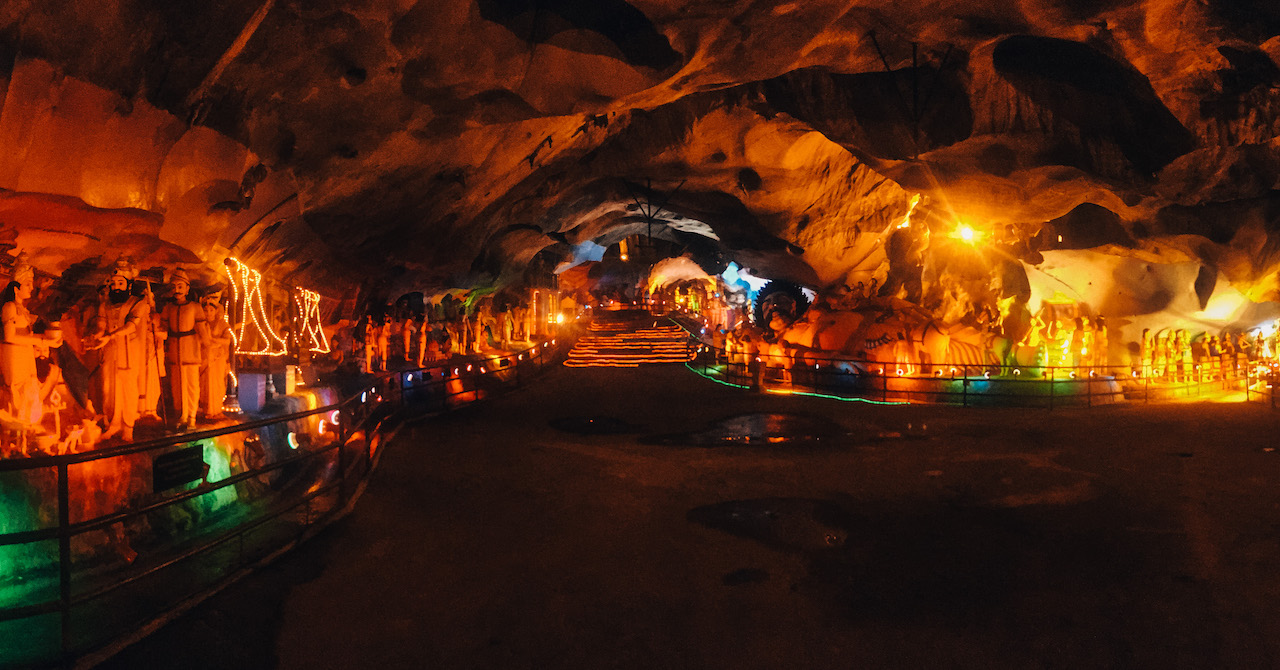
I was all alone in the midst of a series of terrifying dioramas. A sleeping Gulliver of a man against one side of the cave was covered in tiny people trying to pierce him with arrows. The depiction was apparently of the story of Ramayama, which I tried to look up, but I think I found the wrong legend as it involved monkeys and bears rather than tiny people.
The small chamber I was in was reminiscent of “It’s a Small World” at Disney World. The dark surroundings, the bright Christmas lights, the colorful, dead-eyed figures, only now, all the music was turned off and I was the only one inside. Spooky would be an understatement. That could very well be the creepiest place I have ever been.
A Japanese family with two little boys suddenly came bustling in behind me and I was happy for once for the presence of other tourists. I let them go ahead, eager to watch the kids’ excitement over being in a cool cave instead of having to look at the unnerving scenes. Yes, I realize I could have just turned around and left, but what fun is that? I was secretly having a blast with such a weird experience. (Shh, don’t tell anyone.)
Beyond the hall of horrors, there were some stairs to climb up, some puddles to dodge, and absolutely nothing at the top except for a massive gate blocking off the vast abyss that was the rest of the cave. I could not see how far back it extended, and tried to use the light on my phone to see if an end was in sight. The pitiful beam didn’t penetrate more than a couple feet, and a chill came over me at the sight of unknown emptiness.
Content that I had seen all there was to see, I left, heading back to the apartment to plan my next move for the day.
Tip for travelers: there are actually 5 caves that make up the Batu Caves, not just the two I visited (Temple Cave and the Art Gallery Cave). Dark Cave is a third, and can only be visited by booking a guided spelunking tour in advance. The two “Cave Villas” I somehow missed. You can read more information on all 5 caves by clicking here.
